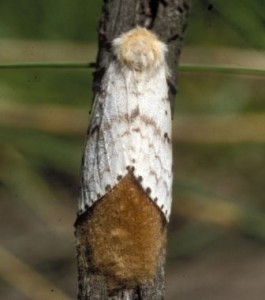
EMPORIUM – Last year gypsy moth egg mass surveys indicated that the number of gypsy moths had increased, as they have over the past several years. This year oaks, their preferred food source, were widely defoliated, suffering from a poorly-timed frost throughout the area. Some were further defoliated by gypsy moths, putting large sections of forest under stress before several factors this summer seem to have reversed the gypsy moth’s gains in the area.
Oaks are an important part of the Elk State Forest and are a dominant feature on half of the district’s nearly 200,000 acres of forest land, said Jeanne M. Wambaugh, district forester. She said the gypsy moth feeds on the foliage of hundreds of species of plants in North America, but its most common hosts are oaks and aspen. As gypsy moth populations fluctuate, Wambaugh said they become destructive at very high levels, and trees may become completely defoliated. Several successive years of defoliation may result in the death of the tree.
“To combat this problem, this spring on the Elk State Forest we treated more than 2,300 acres with bacillus thuringiensis var. kurstaki (Btk) to attempt to minimize defoliation and prevent tree mortality. The area we treated on the Elk State Forest is located near Ridge Road, north of Stillhouse Road,” said Wambaugh.
Additionally, she said there are fungi and viruses that help control gypsy moths as their population increases. She said wet springs help the fungus multiply and spread, and the regular precipitation received this year seems to have suppressed the number of caterpillars that survived to reproduce.
“On the Elk State Forest, we are still finding isolated patches of heavy egg masses, and we will continue work to further control gypsy moth populations,” said Wambaugh. “Unfortunately, as with many exotic pests that become established in our ecosystems, we will never be completely rid of gypsy moth’s threat to our forests.
“We will continue our suppression efforts and will keep you informed on the cyclical trends of the gypsy moth in our area.”
You can find more about the gypsy moth by going to the DCNR Web site.